Glass house remains an inspiration for architects ever since the era of industrialization when architecture became associated with steel and glass. Simultaneously solid and fragile, providing privacy and exposure, ornament-free but decorative, glass buildings offer the mirage blending into the colours and shapes of the surrounding landscape and extending far beyond the confines of their built structure.
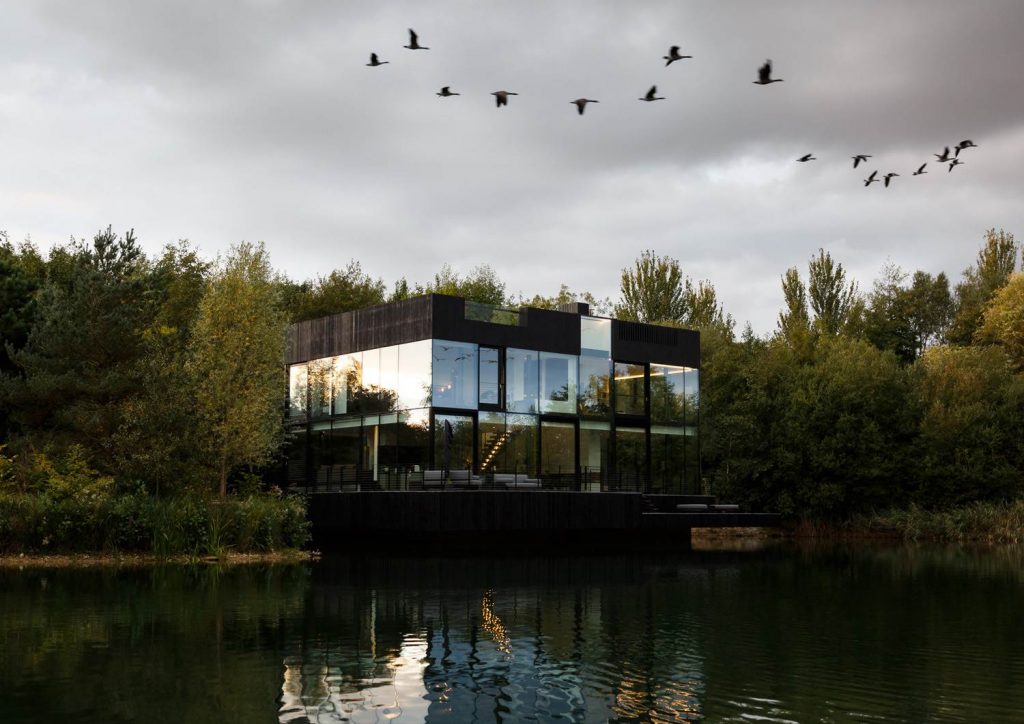
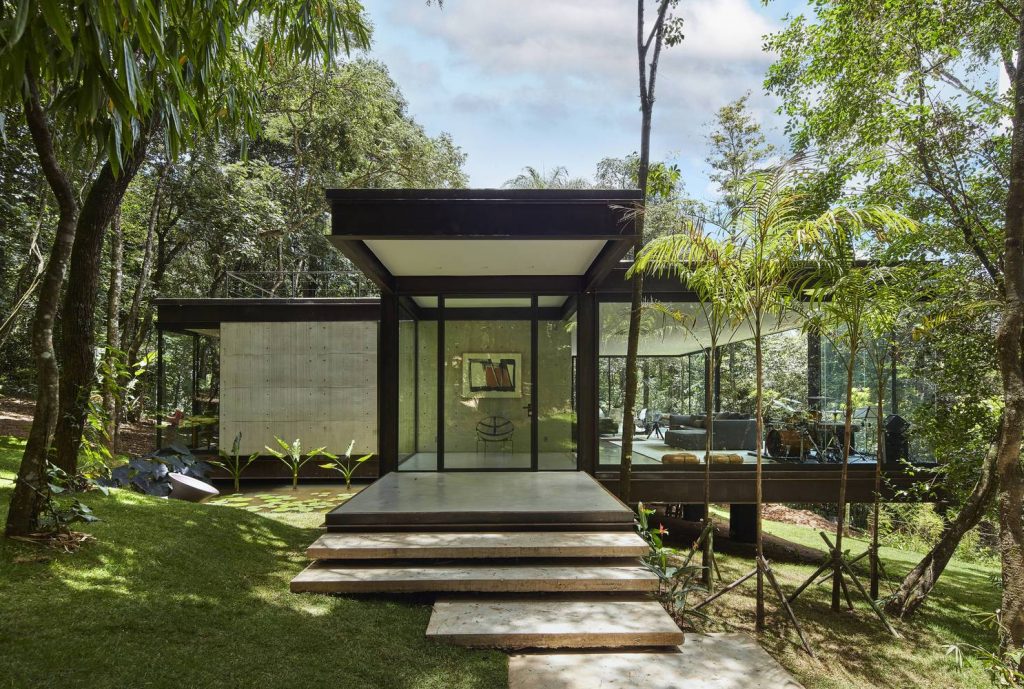
Casa Branca by Angela Roldao Arquitetura
Located in a huge natural reserve in Brazil full of rivers, waterfalls and trails, Casa Branca by the local architect and urban planner Angela Roldao Arquitetura is a gorgeous glass house with all integral features of a minimalist retreat in keeping with the lifestyle adopted by the client who loves gardening, nature and is an amateur musician.

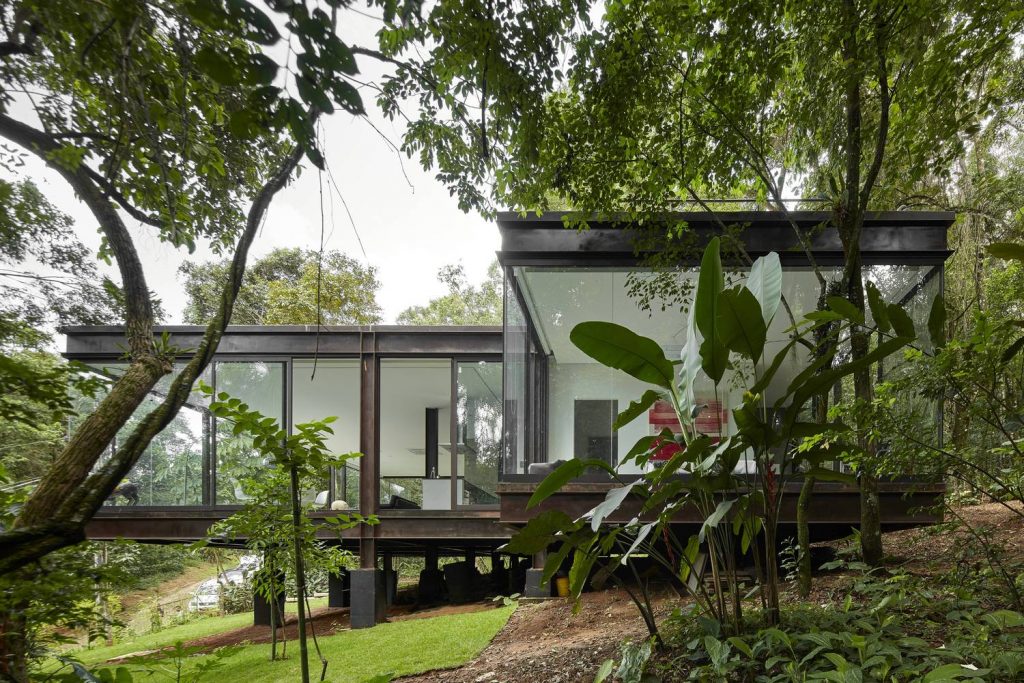
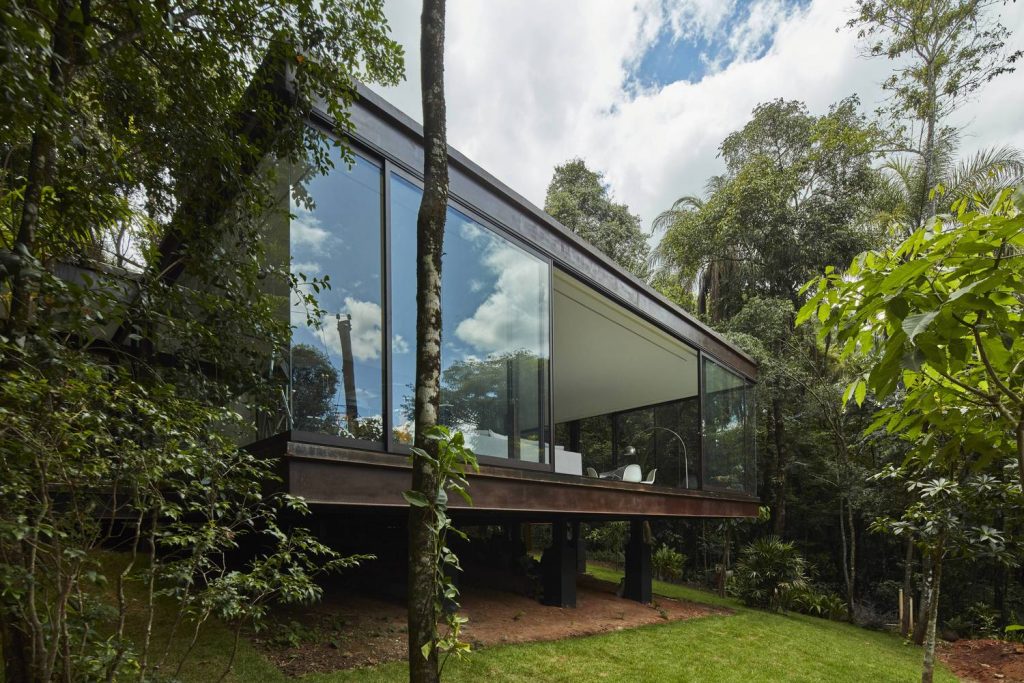
Casa Branca by Angela Roldao Arquitetura
The building is a simple construction that owing to the generous use of glazing from all sides gives an impression of a much larger space than it really is. Metal structure, aluminum window frames, glass, exposed concrete define the space and creates the experience of spatial continuity that extends beyond the walls of the dwelling and blends with the surrounding foliage.
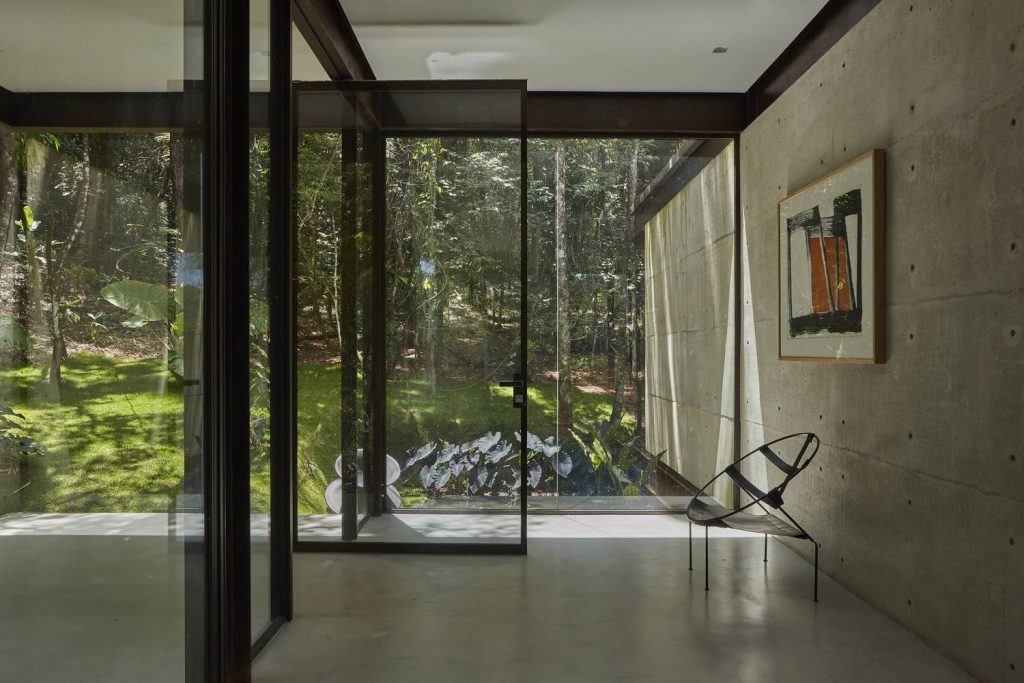
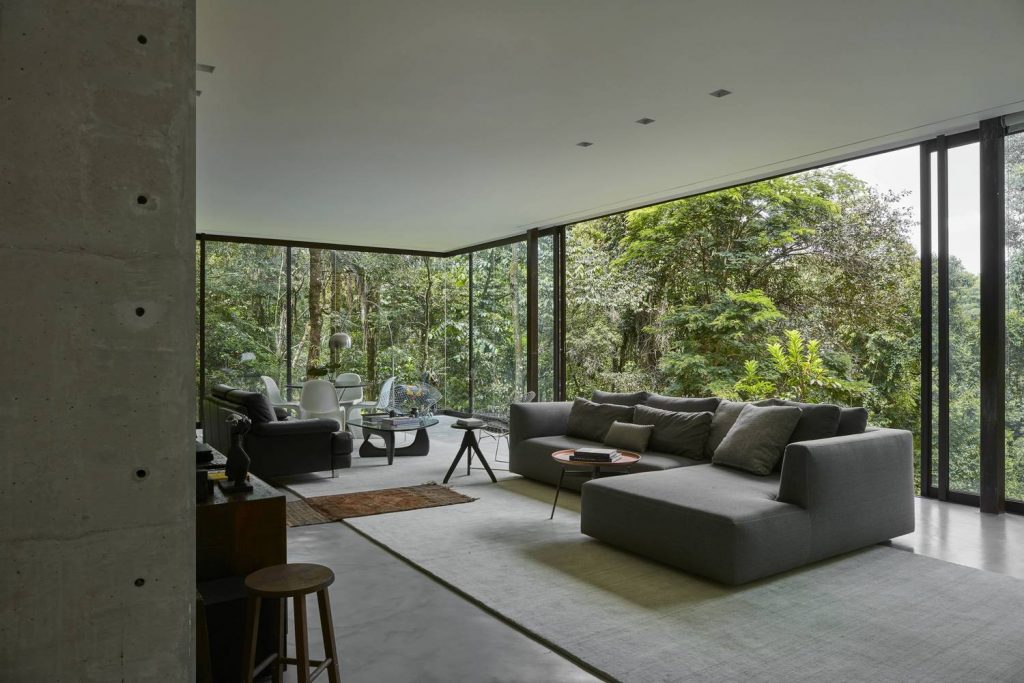
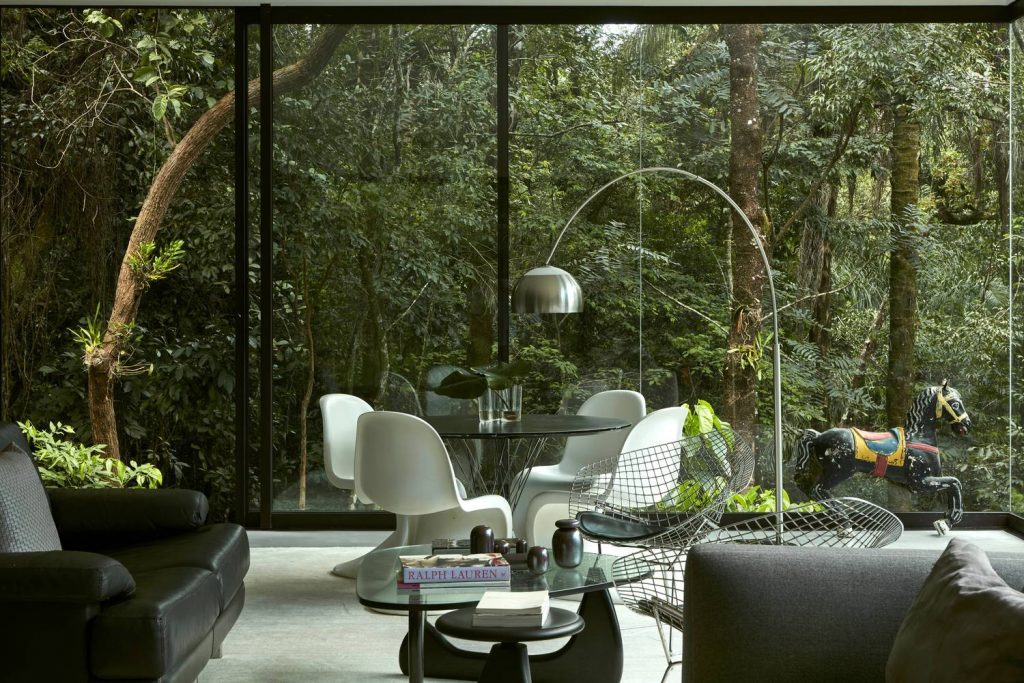

Casa Branca by Angela Roldao Arquitetura
Perched along a hilly slope and levelled by steel rods, the structure gives its occupants the feeling of living in a treehouse.
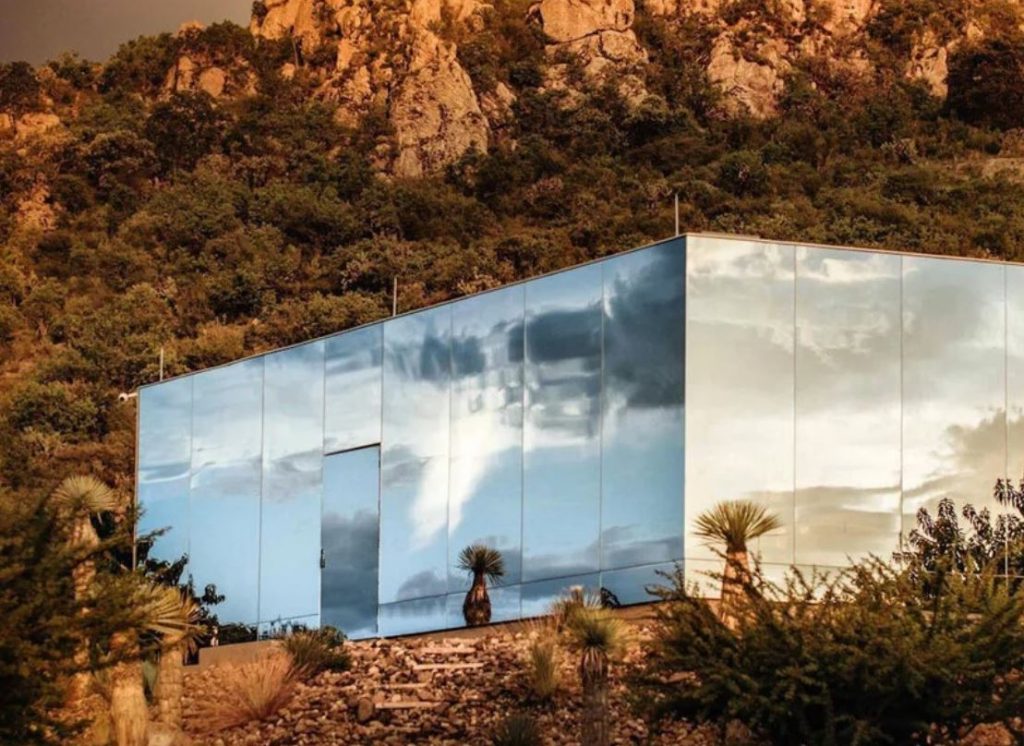
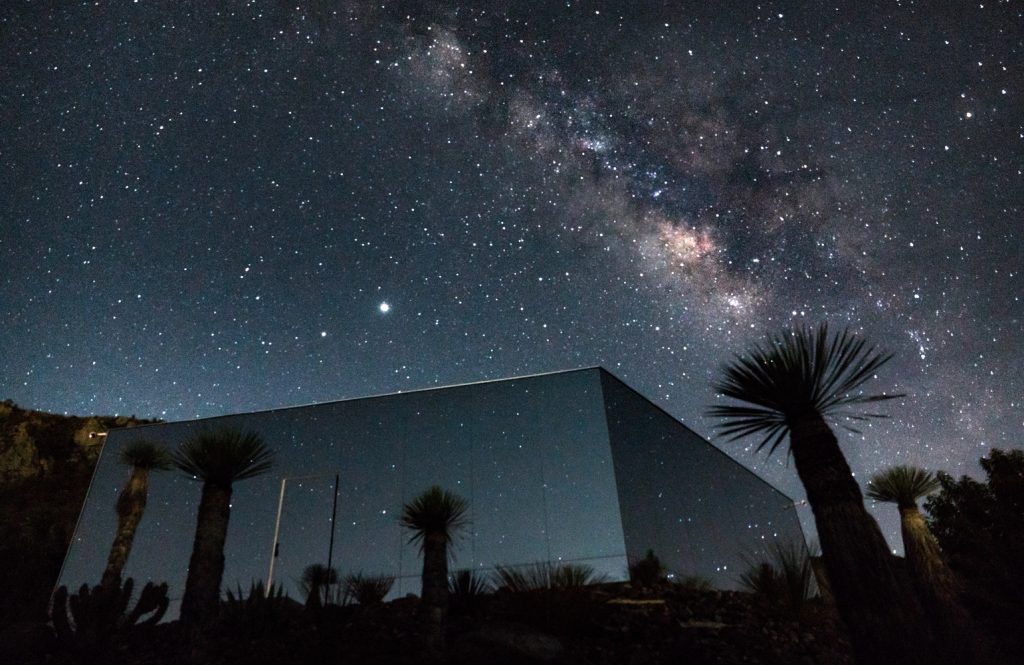
Casa Etérea by Prashant Ashoka
Conceived as an off-grid hideaway for two and situated on the slopes of an extinct volcano in Mexico, 75-square-metre Casa Etérea by Mexico-based Singaporean writer and designer Prashant Ashoka has been created as a “theatre to nature”.
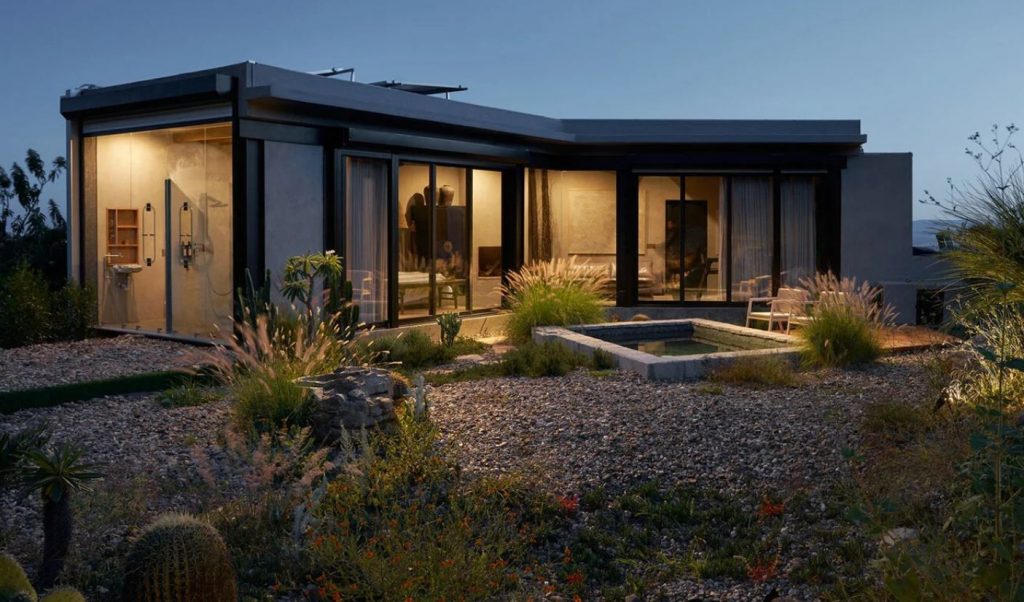
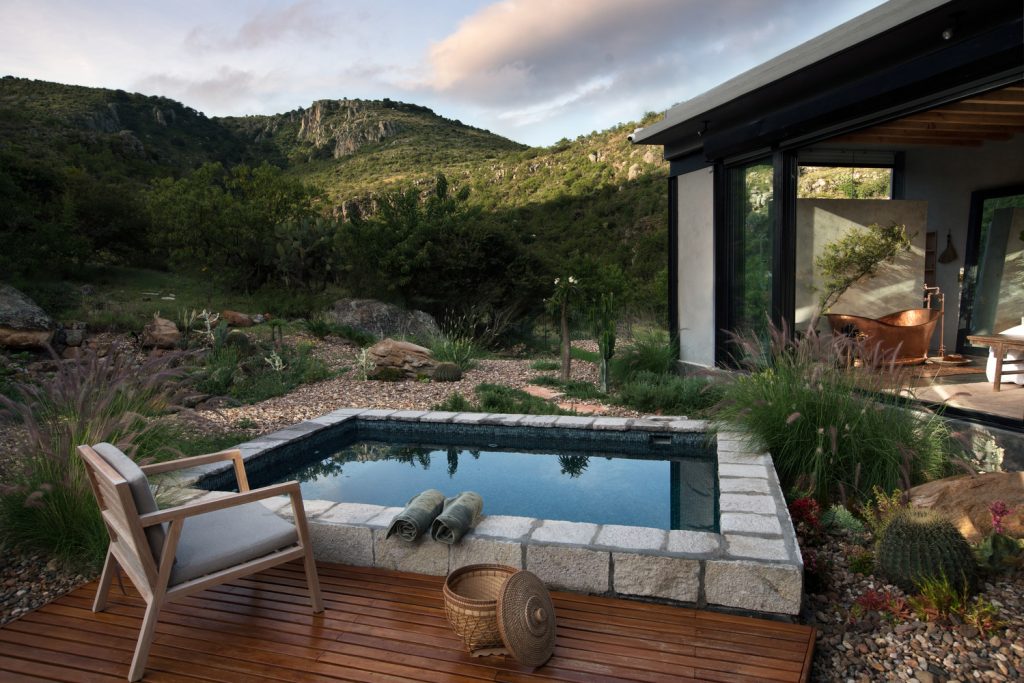
Casa Etérea by Prashant Ashoka
The simple straightforward structure is clad in a mirrored façade that reflects the surrounding landscape, while interacting with natural light which becomes a structural element of the design as it changes during the day. As the mirrored surface catches first light, the house gleams as a phosphorescent blue-tinged box against the blackness of the mountainside, while in the ombre hues of sunset the volume scintillates against the landscape like a mirage. Patterned ultraviolet coating makes the glazing visible to birds, while remaining reflective to the human eye.
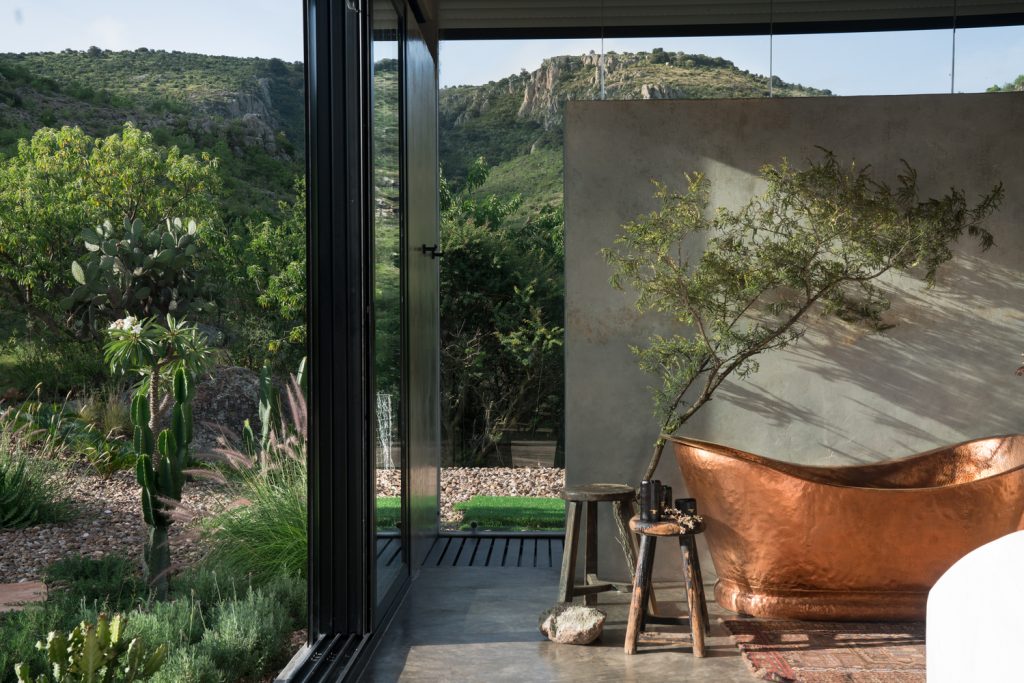
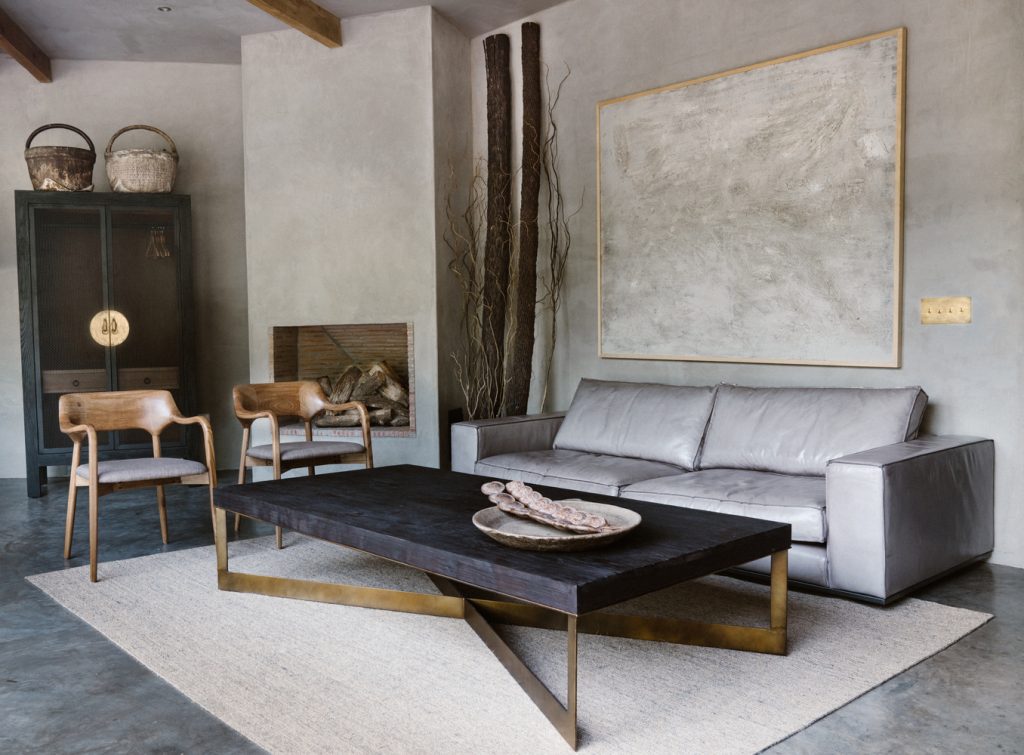
Casa Etérea by Prashant Ashoka
Inside, the dwelling does not have any partition walls. Instead, it features an open-plan space with floor-to-ceiling sliding glass doors that frame wide views of towering cliffs, while opening to connect with a decked patio and solar-heated pool area shaded by olive and pomegranate trees.
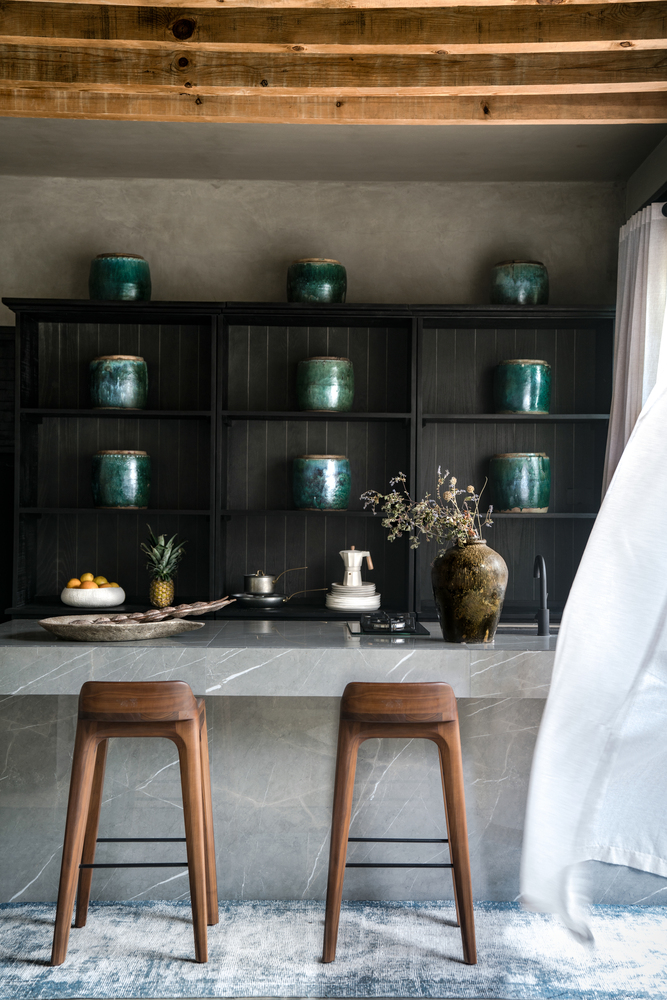
Casa Etérea by Prashant Ashoka
Sustainability in integral to the project. The dwelling draws all its power from solar energy and its water supply from collected rainwater. By utilizing site orientation, efficient ventilation design, and insulated glass, the house naturally regulates temperature in the semi-arid desert climate of the central Mexican highlands. Aiming to minimize the environmental impact of the construction, the foundation of the house was built entirely from rock collected off the mountain.

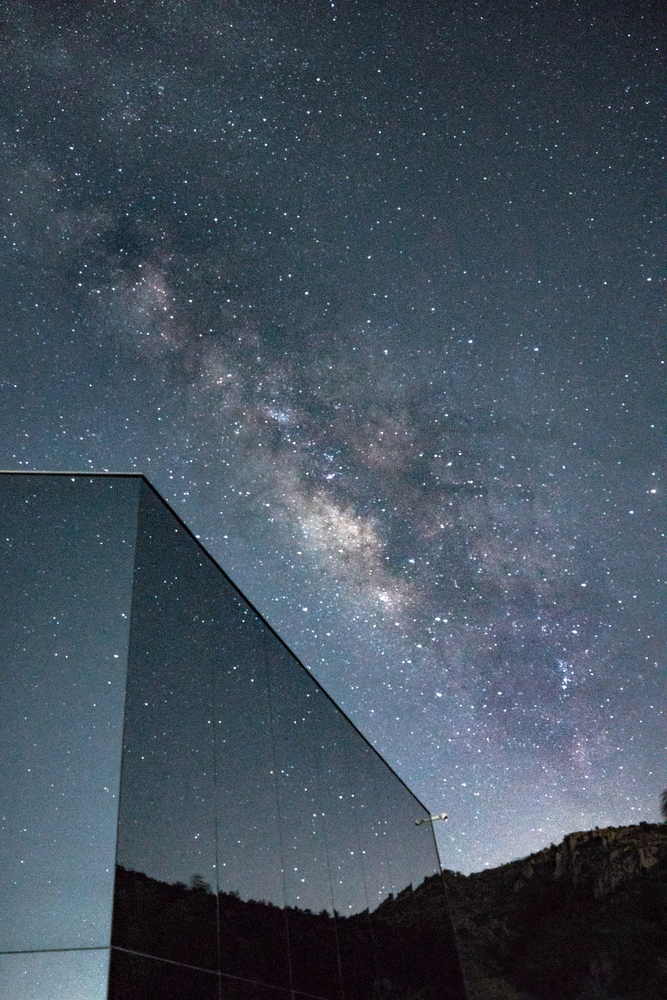
Casa Etérea by Prashant Ashoka
According to Ashoka, such isolated lodgings have the power to turn us inwards: “These times have made us acutely aware of our interdependence with our environment. And shelters in remote places may afford us a rare stillness and opportunity to bridge the distance between us and the natural world”.
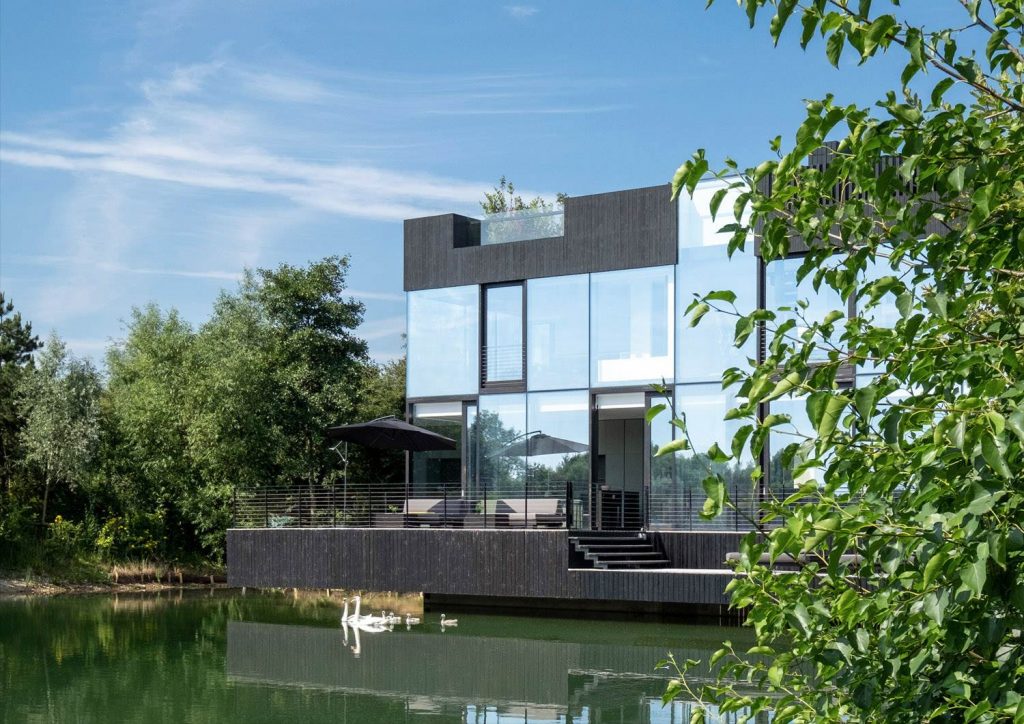
Glass Villa in the Lake by Mecanoo (also header image)
The guiding design principle behind Glass Villa in the Lake, a three-storey house built by Dutch studio Mecanoo in the UK, is to create a house that combines transparency with sustainability, forging a strong relationship between the villa and the landscape. Aiming to establish harmony between landscape and interior, architecture and nature, the team has designed the house inside out, creating uninterrupted views to the surrounding nature while providing shelter and intimacy.

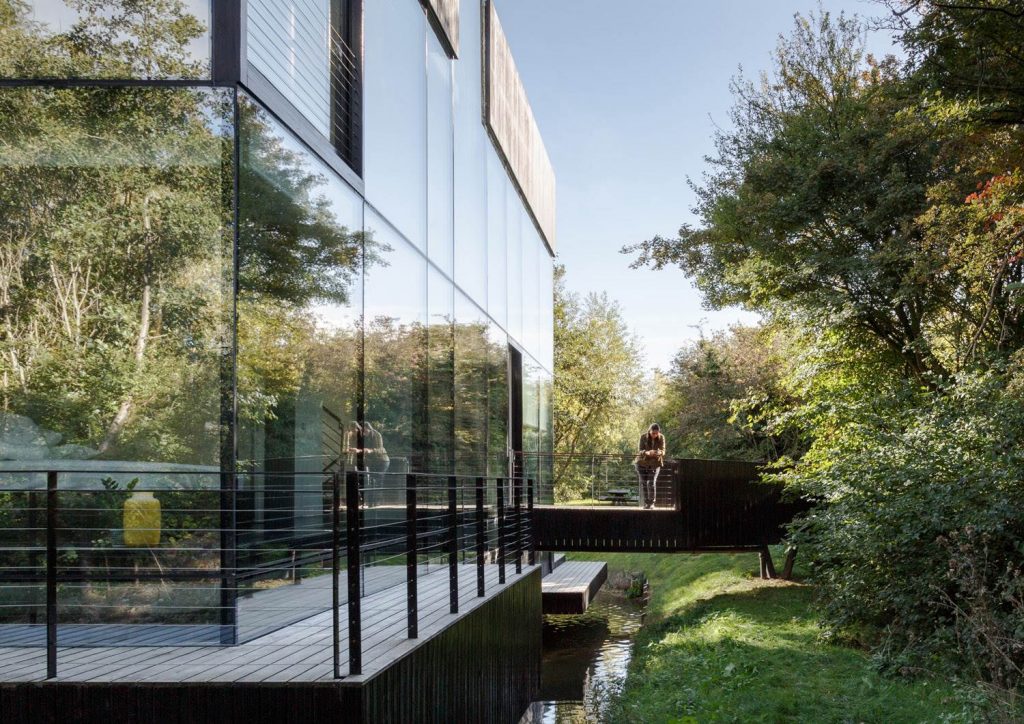
Glass Villa in the Lake by Mecanoo
Glass corner windows in the living room, kitchen and other rooms, make the residents feel like they live on the water. To ensure there is a view of the nature from every corner of the house, the house’s interior is largely open-plan with just a few partitions doubling as useful features, such as a fireplace or storage. These elements divide the house into different areas, creating more intimate and private spaces within the large transparent volume. The sense of privacy is enhanced by a hilly finger of land with tall trees between the house and the adjacent plot.
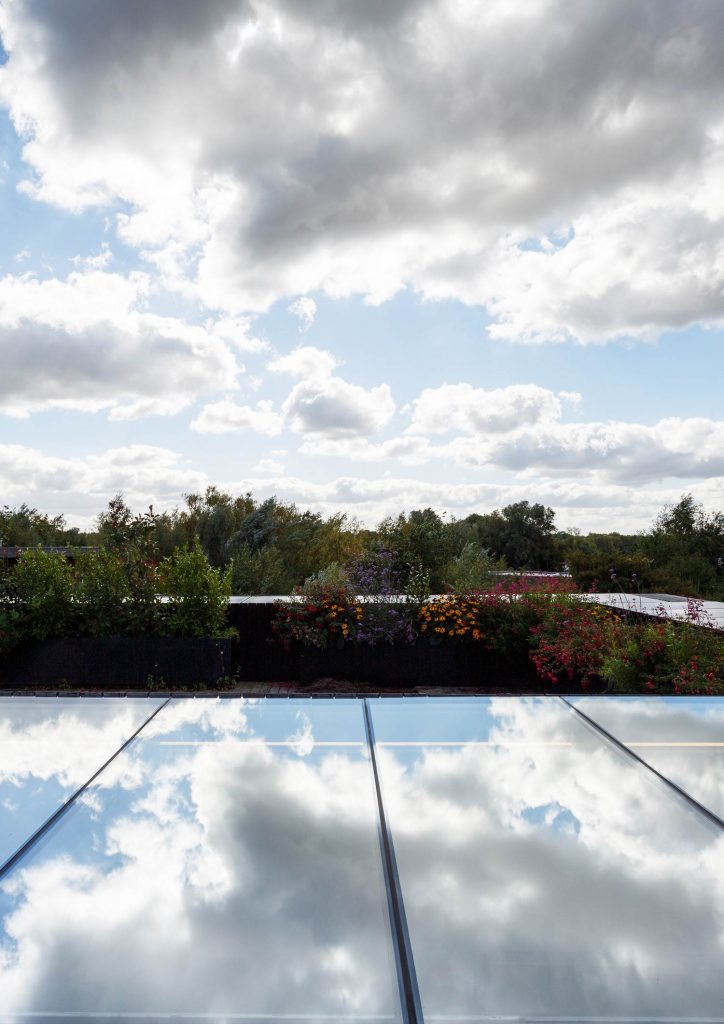

Glass Villa in the Lake by Mecanoo
The house features a roof terrace where one can enjoy panoramic views of the lake and a basement floor submerged beneath the water’s surface. This underwater level contains a jacuzzi, a games room and a home cinema.

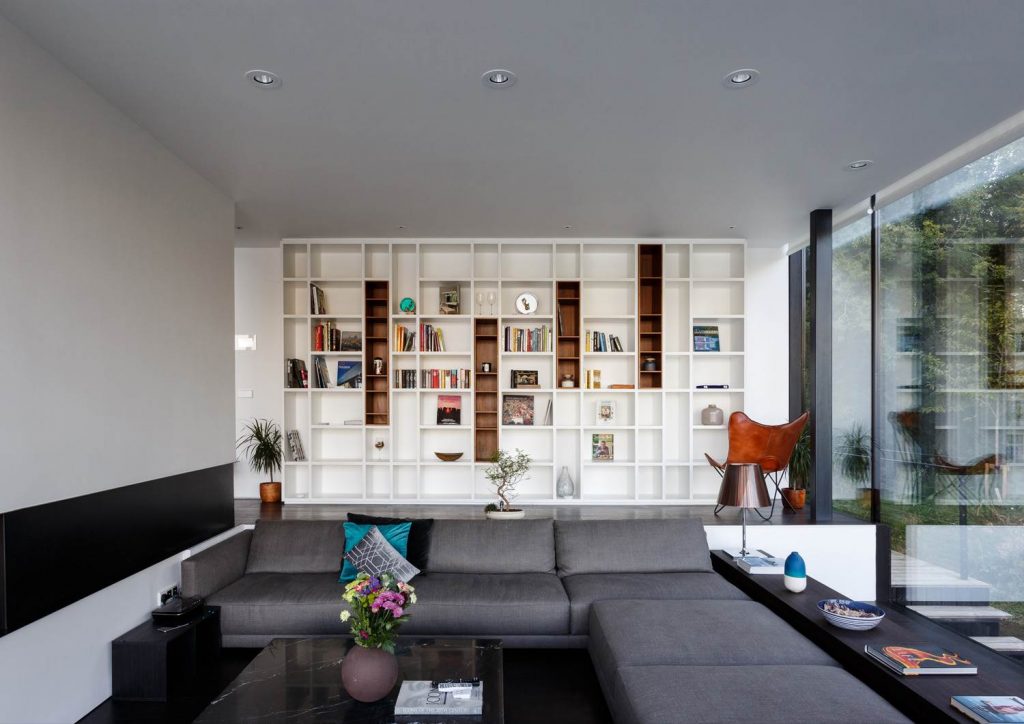

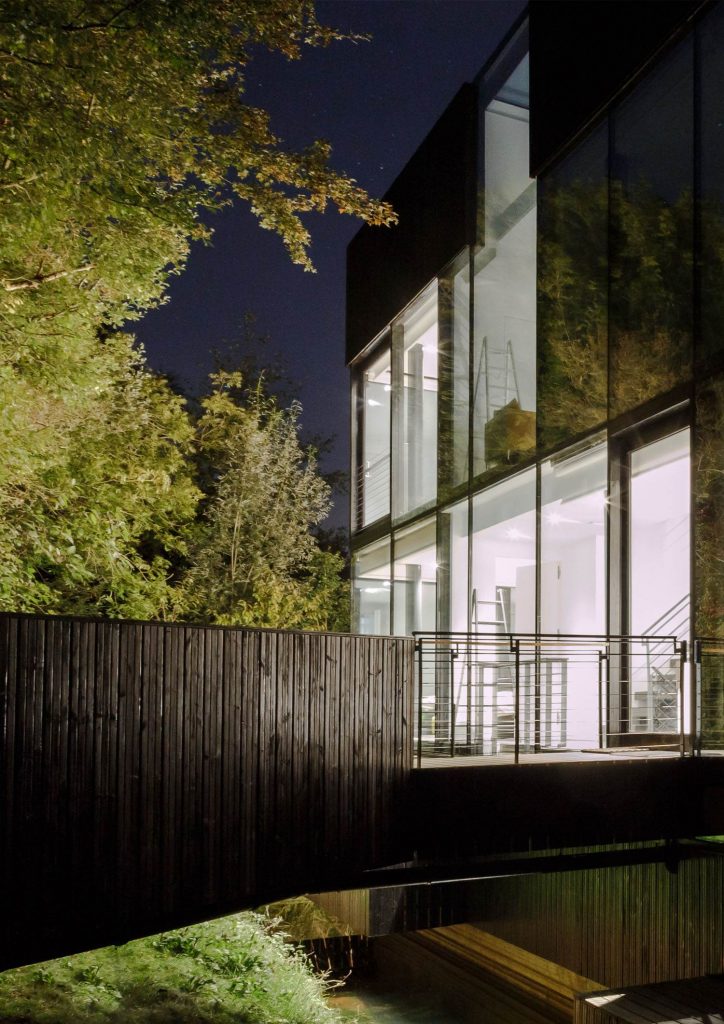
Glass Villa in the Lake by Mecanoo
All rooms are connected together into one interior space by a staircase and a central atrium that brings abundant daylight into the sunken basement and provides access the interior to the rooftop garden.